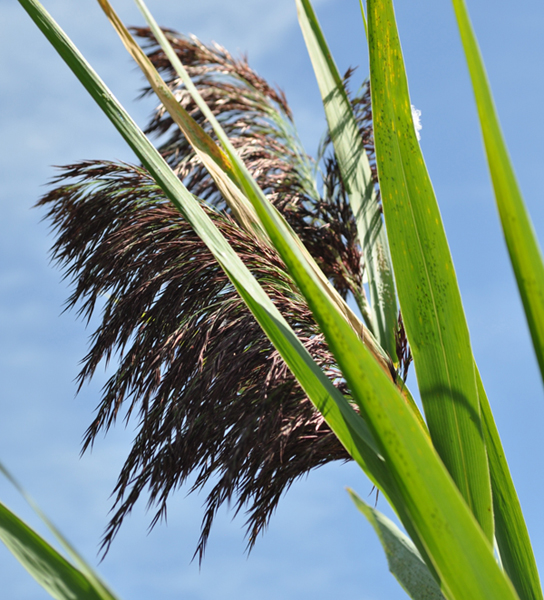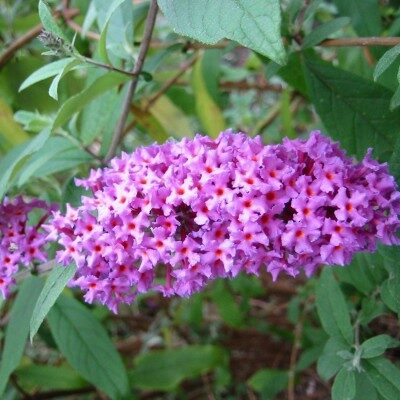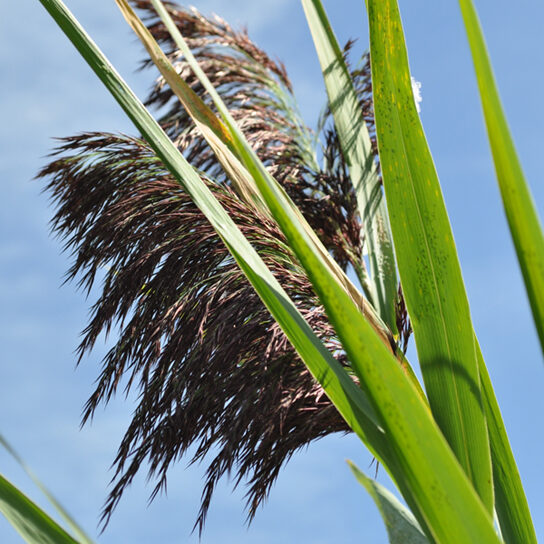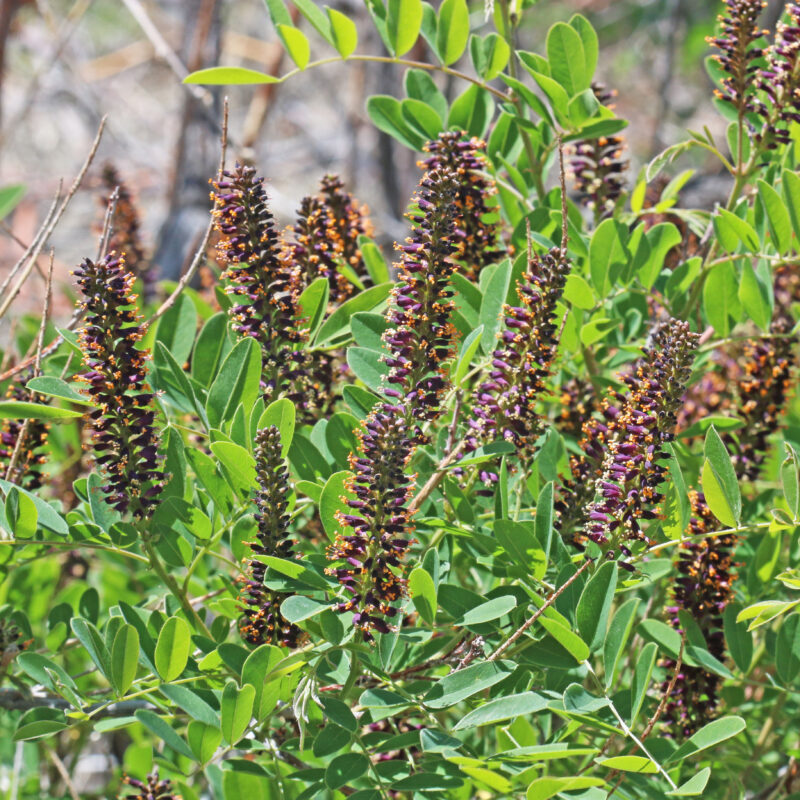Common reed (Phragmities australis), also known as giant reed grass and yellow cane, is a type of large perennial grass. It favors calm, shallow moist areas, such as swamps, marshes, brackish estuaries, wetlands, stormwater catchments, and ditches. It spreads by seeds, or rapidly-growing above-ground (or above-water) runners and long underground rhizomes.
Common reed has two distinct genotypes, now classified by OregonFlora and others as separate subspecies.
Phragmites australis ssp. australis is an aggressive non-native Eurasian-African form with higher salinity tolerance. It often forms monocultures that can inhibit water flow and displace and reduce the diversity of native plants and wildlife.
Phragmites australis ssp. australis is a class B rated noxious weed in both Oregon and Washington. The City of Portland lists it as a Required Eradication species. Control methods including multi-year plowing, cutting, mowing, discing, herbicides, burning, altering the water table and salinity levels, and grazing by goats have resulted in variable results. While goat, cow, and horse grazing has been a traditional control method practiced for thousands of years in Europe, there are concerns trampling on soft wet soil can open up new habitat and further damage delicate wetland areas. No biological control method is currently known.
Phragmites australis ssp. americanus is native to inland marshes, lakes, and some coastal areas throughout North America except the Southeast, where it rarely forms dense stands.
Appearance
Phragmities australis grows up to 20 feet tall, and has thick stems with many hollow segments. Its alternate rigid leaves are flat, non-hairy, grow 6” to 28” in length, and taper to a spiny point. The tan-brown purplish flower clusters are large tufted drooping plumes 6” to 20” long.
Distinguishing the two genotypes can be difficult and depends on careful measurement of flower parts called glumes and ligules, along with other traits.
In the native type, leaves are lighter yellow green. When leaf sheaths die, especially from the dead lower nodes on the stalk, reddish-purple stem internodes are exposed. The stems sometimes have black native fungal spots.
In the introduced type, leaves are darker blue-green with tightly-adhered leaf sheaths. They have rougher and more yellow internodes, which do not have fungal stem spots.
Common reed can prevent soil erosion and remove pollutants and sediment. It has been used for traditional crafts, instruments, tools, forage, and thatch. However, besides contributing to habitat loss outside of its native range, dead stems can be a fire hazard and present habitat for mosquito breeding.
(Top photo by NY State IPM Program at Cornell University, flickr)



